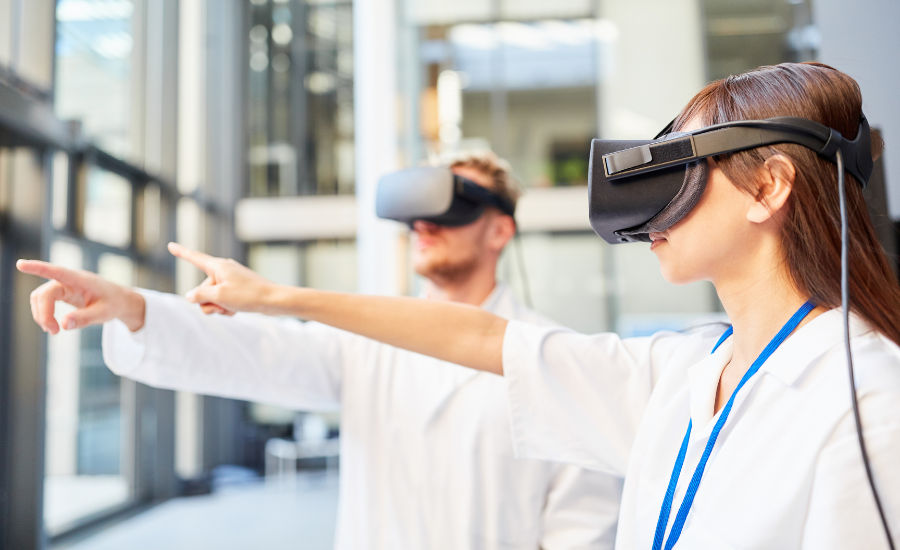When we think of wearable tech, our minds often jump to fitness trackers—step counters, heart rate monitors, and calorie trackers wrapped around our wrists. But as we move deeper into the digital age, wearable technology is evolving far beyond health stats and fitness goals. From enhancing communication and productivity to improving mental well-being and even transforming fashion, wearable tech is entering a new era.
Let’s explore how this exciting field is expanding and what the future holds beyond traditional fitness trackers.
🧠 1. Mental Health and Emotional Monitoring
In 2025 and beyond, wearable tech is focusing more on the mind as much as the body. Devices are being designed to monitor mental well-being by detecting stress, anxiety, and mood shifts using biosignals such as heart rate variability, skin temperature, and even facial expressions.
Emerging examples:
- Emotiv Insight: A sleek headset that uses EEG sensors to read brainwaves and help improve focus, manage stress, and enhance meditation.
- Apollo Neuro: A wrist-worn device that uses gentle vibrations to reduce stress and improve sleep and focus by stimulating the nervous system.
These tools don’t just track mental health—they intervene in real-time, helping users build emotional resilience and awareness.
👕 2. Smart Clothing and E-Textiles
Wearable tech is becoming more integrated—literally. Smart clothing embeds sensors directly into fabric, transforming everyday garments into intelligent health and lifestyle tools.
What’s possible:
- T-shirts that monitor breathing and heart rate during workouts.
- Jackets that adjust insulation based on temperature.
- Yoga pants with embedded motion sensors to correct your posture in real-time.
Tech-integrated fashion is not only functional but increasingly fashion-forward, merging performance with personal style.
👁️ 3. Augmented Reality (AR) Glasses
After years of development, AR glasses are on the brink of becoming mainstream. Unlike virtual reality, AR enhances your real-world view with digital overlays—useful for navigation, work, and daily life.
How they’re transforming use cases:
- Navigation: Visual directions displayed in your field of vision.
- Workplace: Hands-free video calls, real-time translations, or factory floor guides.
- Retail: Try on clothes virtually or view furniture in your home before buying.
Companies like Meta, Apple, and Google are investing heavily in sleek, user-friendly models—making AR glasses one of the most anticipated shifts in wearable tech.
🎧 4. Smart Audio Devices (Hearables)
Smart earbuds, or hearables, are going beyond just playing music. They’re being built with voice assistance, real-time language translation, biometric tracking, and adaptive sound control.
Innovations include:
- Live language translation while you’re in conversation.
- Real-time fitness tracking via sensors in your ear.
- Adaptive noise canceling that adjusts to your environment.
These discreet, stylish devices are turning into digital assistants you wear, making communication, travel, and daily tasks seamless.
❤️ 5. Medical Wearables for Chronic Care
Wearable tech is revolutionizing healthcare, especially for those with chronic conditions. Devices can now monitor glucose levels, detect arrhythmias, and track medication adherence—improving both prevention and treatment.
Breakthroughs to watch:
- Continuous glucose monitors (CGMs) for diabetics that alert users before sugar levels spike or crash.
- Smart patches that administer drugs or monitor vitals through the skin.
- AI-powered devices that predict seizures or asthma attacks before they happen.
These wearables are more than convenient—they’re lifesaving tools that empower patients with real-time data and autonomy.
🪙 6. Payment and Security Integration
Just as smartphones replaced wallets, wearables are now replacing smartphones. Smart rings, wristbands, and watches are being equipped with NFC (Near Field Communication) to allow contactless payments, building access, or even unlocking your car.
Imagine:
- Paying for coffee with a flick of your wrist.
- Walking into your gym or office without a keycard.
- Verifying your identity securely at airports or events.
It’s convenience merged with cutting-edge security protocols—and it’s happening faster than you think.
🌐 7. Workplace Productivity and Safety
In industrial and corporate environments, wearables are improving safety, communication, and efficiency. Think smart helmets, gloves, or badges that monitor fatigue, detect hazards, and relay critical updates in real time.
Examples include:
- Smart vests for construction workers that monitor body temperature and heart rate.
- Wearable tags for warehouse employees that help with social distancing and tracking.
- AI-integrated glasses that provide step-by-step instructions for complex tasks.
Wearable tech in the workplace is becoming essential—not optional.
🚀 The Road Ahead
As wearable technology matures, expect it to become:
- More invisible (embedded in skin, glasses, jewelry, or even tattoos)
- More personalized, adapting to your behaviors and preferences
- More integrated, syncing across devices and platforms
And as AI and 5G continue to evolve, wearables will shift from passive trackers to active collaborators in our day-to-day decisions.
🎯 Final Thoughts
The future of wearable tech is not just about counting steps—it’s about augmenting human potential. From healthcare to communication, fashion to mental health, wearables are becoming smarter, subtler, and more deeply connected to how we live.


